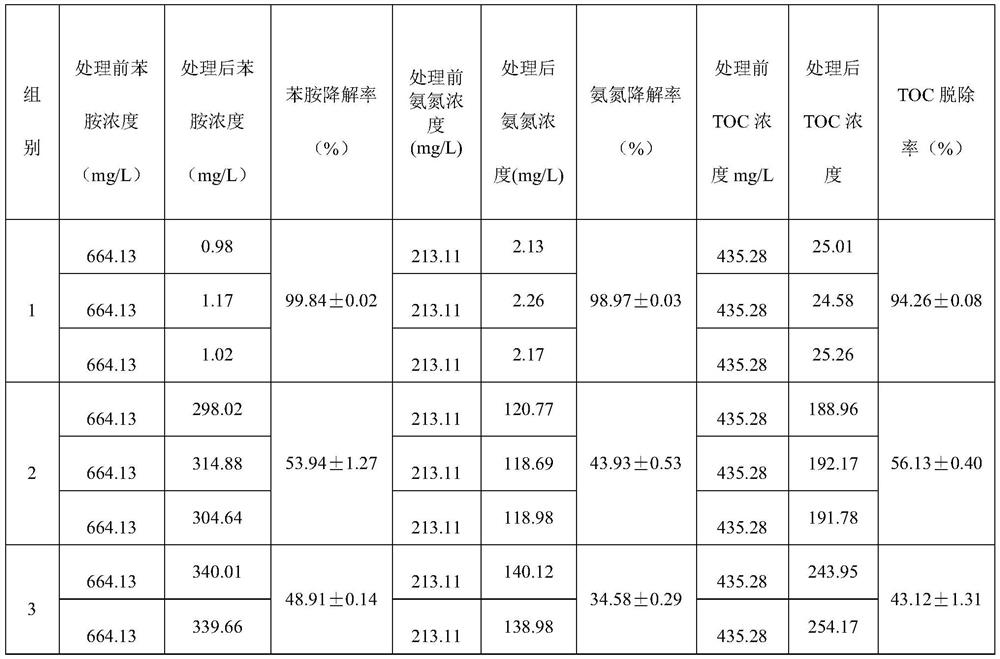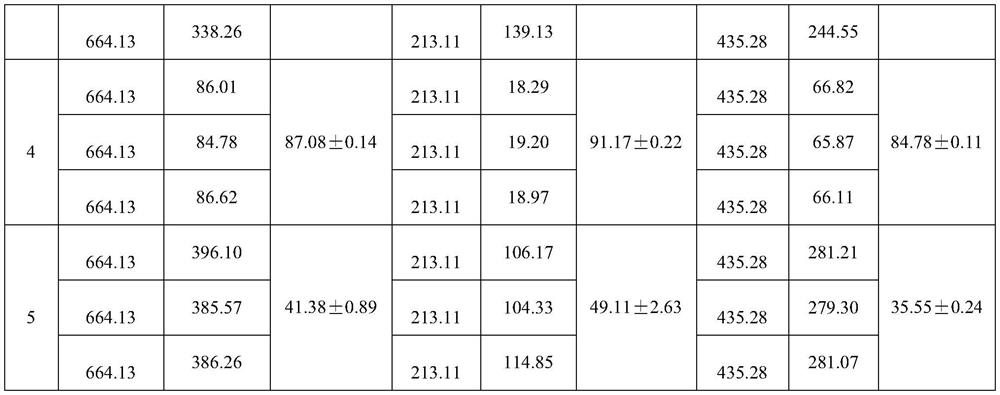Wastewater treatment preparation and preparation method thereof
A technology for wastewater treatment and preparation, which is applied in biological water/sewage treatment, water/sludge/sewage treatment, chemical instruments and methods, etc., and can solve the problems of secondary pollution and poor treatment effect.
- Summary
- Abstract
- Description
- Claims
- Application Information
AI Technical Summary
Problems solved by technology
Method used
Image
Examples
preparation example Construction
[0029] A preparation method for waste water treatment preparation, comprising the steps of:
[0030] Step I: activation of persulfate, using metal ions to activate persulfate to obtain activated persulfate; persulfate is sodium persulfate or potassium persulfate, and the metal ion is Cu 2+ 、Ag + 、Co 2+ At least one of them; the pH of the activation treatment is 7-9;
[0031] Step II: Preparation of composite bacterial agent, after separately cultivating Bacillus, Pseudomonas putida, Candida, nitrosifying bacteria, nitrifying bacteria and denitrifying bacteria, mix in proportion to obtain composite microbial bacterial agent, and then compound The microbial bacterial agent is mixed with the carrier in a mass ratio of 1:2 to obtain a composite microbial agent;
[0032] Step III: Mix stearoyl glutamate, glucose, silica gel powder, activated persulfate, polyvinylpyrrolidone, and compound bacterial agent in proportion, and adjust the pH of the system to 5.3-8.1;
[0033] Step IV...
Embodiment 1
[0039] A wastewater treatment preparation, comprising the following raw materials in parts by mass: 15 parts of stearoyl glutamate, 12 parts of glucose, 12 parts of silica gel powder, 4 parts of persulfate, 3 parts of polyvinylpyrrolidone, and 25 parts of composite bacterial agent; The persulfate is activated by metal ions; the composite microbial agent includes a carrier and a composite microbial agent, and the composite microbial agent includes 5 parts of Bacillus, 3 parts of Pseudomonas putida, 8 parts of Candida, and 3 parts of nitrosative bacteria , 3 parts of nitrifying bacteria, and 5 parts of denitrifying bacteria; the carrier is diatomite, activated carbon and peat soil mixed according to the mass ratio of 1:3, and the mass ratio of the carrier to the composite microbial preparation is 2:1.
[0040] In the present embodiment, the persulfate is potassium persulfate (PMS), and the metal ion is Co 2+ , and the concentration ratio of persulfate to metal ion is 5:1. In add...
experiment example 1
[0046] Experimental Example 1: The effect of persulfate activation on the degradation rate of p-aniline, ammonia nitrogen degradation rate and TOC removal rate
[0047] experimental method:
[0048] 1. Degradation rate of aniline: the concentration of aniline is measured by liquid chromatography, and the calculation method of the degradation rate of aniline is:
[0049] B(%)=C 0 -C 1 / C 0 ×100%
[0050] Wherein, B represents the degradation rate of aniline; C 0 Indicates the initial concentration of aniline; C 1 Indicates the concentration of aniline after degradation.
[0051] 2. Ammonia nitrogen degradation rate: Nessler's reagent colorimetric method is used for ammonia nitrogen concentration, and the calculation method of ammonia nitrogen degradation rate is:
[0052] N(%)=C 0 -C 1 / C 0 ×100%
[0053] Wherein, N represents the degradation rate of ammonia nitrogen; C 0 Indicates the initial concentration of ammonia nitrogen; C 1 Indicates the concentration of am...
PUM
 Login to View More
Login to View More Abstract
Description
Claims
Application Information
 Login to View More
Login to View More - R&D Engineer
- R&D Manager
- IP Professional
- Industry Leading Data Capabilities
- Powerful AI technology
- Patent DNA Extraction
Browse by: Latest US Patents, China's latest patents, Technical Efficacy Thesaurus, Application Domain, Technology Topic, Popular Technical Reports.
© 2024 PatSnap. All rights reserved.Legal|Privacy policy|Modern Slavery Act Transparency Statement|Sitemap|About US| Contact US: help@patsnap.com










